#adam etherington
Text
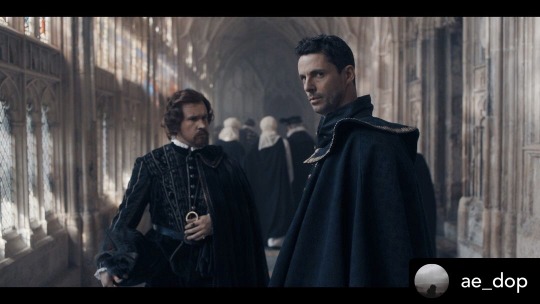
NEW/Old 📸 Matthew GoodE as Super Spy Matthew Roydon filming A Discovery of Witches season 2. Photo released by DOP Adam Etherington BSC on IG today!
Original caption
ae_dop Another little ADOW2 rushes frame, again from the incredible #GloucesterCathedral..
Although we had our main lighting rig of 18k's pushing through the incredible old stained-glass windows, this moment was accentuated by the power of the sun that carried the colour of the window glass onto the stonework. A level of punch we'd never have been able to compete with.
One of those beautiful little moments of serendipity in filmmaking where everything lines up just so…
Shot on @Arri #AlexaMini with #Panavision #PVintage primes.
Serviced by @Panavisionofficial and @Panaluxworld
#matthew goode#a discovery of witches#matthew clairmont#adow#matthewgoode#henry talbot#adowtv#adows2#a discovery of witches tv series#a discovery of witches season 2#matthew roydon#adam etherington#cinematography#filmmaking#gloucester cathedral
24 notes
·
View notes
Photo

1810 Adam Buck - Portrait of Sir James Lucas Yeo
(Agnes Etherington Art Centre)
103 notes
·
View notes
Text
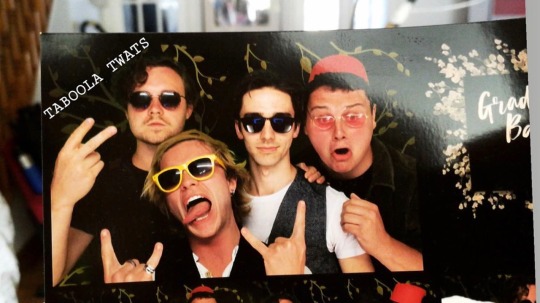
Tom via Taboola Wax’s instagram story | 24/07/2019
7 notes
·
View notes
Photo
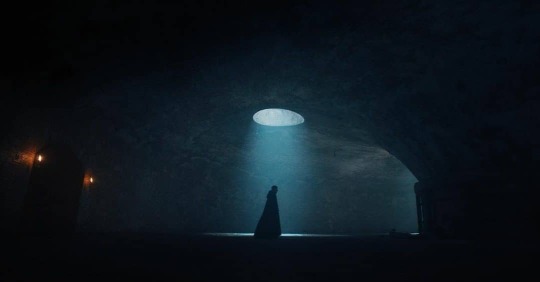
𝘑𝘶𝘴𝘵 𝘯𝘦𝘸𝘴 𝘵𝘰 𝘬𝘯𝘰𝘸 #ADiscoveryOfWitchesS2 😎❤ Posted @withregram • @panaluxworld "We were influenced by the motivation of the different types and qualities of light between the contemporary and period settings, but we still tried to maintain a general continuity of aesthetic within the series. There was a great focus within the production on beauty and scale, and we wanted to ensure that our lighting approach enhanced these objectives." Cinematographer Adam Etherington BSC discusses his approach to lighting and shooting season 2 of A Discovery of Witches and how #Panalux have been a supportive presence in his career. "Panalux have supported me massively throughout my career, right from the very start...I didn’t go to film school, so Panalux’s help made a massive difference. That was the foundation of my learning in lighting — just getting kit, making things up and gradually figuring out how everything worked." Read more at the link in bio. @ae_dop https://www.instagram.com/p/CNuj1cSHdUG/?igshid=2puch4f8lgqw
18 notes
·
View notes
Text

Tempest, Marie (1864–1942) English actress who was hugely popular in both musical comedy and comic plays. Born Mary Susan Etherington on July 15, 1864, in London, England; died on October 14, 1942; educated at Midhurst and at a convent in Belgium; studied singing at the Royal Academy of Music, London; married Alfred E. Izard (divorced); married Cosmo Gordon-Lennox (an actor and playwright), in 1898 (died 1921); married William Graham Browne (an actor-director), in 1921 (died 1937); no children. Made London debut as Fiametta in Boccaccio (Comedy Theater, May 1885); appeared as Lady Blanche in The Fay o' Fire (Opéra Comique, 1885), in the title role in Erminie (Comedy Theater, 1885); took over the title role in Dorothy (Prince of Wales Theater, 1887); appeared as Kitty in The Red Hussar (Lyric Theater, 1889); made New York debut in the same role (Palmer's Theater, August 1889); toured U.S. and Canada with the J.C. Duff Opera Co. (1890–91); appeared as Adam in The Tyrolean (CasinoTheater, New York, 1891), O Mimosa San in The Geisha (Daly's Theater, London, 1896), in the title role in San Toy (Daly's Theater, 1899), as Nell Gwynn in English Nell (Prince of Wales Theater, 1900), in the title role in Peg Woffington (Prince of Wales Theater, 1901), as Becky Sharp in Vanity Fair (Prince of Wales Theater, 1901), as Kitty Silverton in The Marriage of Kitty (London and New York, 1903); toured America, Australia, and elsewhere (1914–22); appeared as Annabelle Leigh in Good Gracious, Annabelle (Duke of York's Theater, 1923), as Judith Bliss in Hay Fever (1925), as Angela Fane in The Cat's Cradle (Criterion Theater, 1926), in the title role in The First Mrs. Fraser (Haymarket Theater, 1929), as Fanny Cavendish in Theater Royal (Lyric Theater, 1934), as Georgia Leigh in Short Story (Queen's Theater, 1935), as Dora Randolph in Dear Octopus (Queen's Theater, 1938).The celebrated English actress Marie Tempest first graced the stage as a singer in operas and musical comedies before taking up serious acting, at which she was also immensely successful, at age 36. Tempest's phenomenal popularity lay not so much in her creative genius, but in her unique ability to bring much of her own personality and temperament to the characters she portrayed. "She seems to radiate the joy of living," wrote a reviewer for the London Times upon seeing her performance in The Cat's Cradle in April 1926, "to drive it home to us by her mere presence, by the inspiring notes of her voice, and by the depth of worldly experience and indulgence for our human foibles in her glance. Briefly she is a perpetual refreshment and source of pleasure; something for which the theater exists and by which it triumphantly justifies its existence."
Born in London in 1864, Tempest was educated at Midhurst and at a convent in Belgium until age 16, when she took up the study of music, first in Paris and then at London's Royal Academy of Music. While still a student, she made her singing debut at St. James's Hall, and from that time on was hooked on performing. Taking her stage name from her godmother, Lady Susan Vane-Tempest , she began her career singing in the provinces, and made her London debut in May 1885, in the role of Fiametta in the comic opera Boccaccio. Critics unanimously praised her voice but were somewhat divided on the subject of her acting.
In February 1887, after leading roles in The Fay o' Fire, Erminie, and La Béarnaise, Tempest took over the title role in Dorothy from Marion Hood . She played the role for two years, then won great acclaim as Kitty Carroll in The Red Hussar. Tempest made her American debut in that same role, opening at New York's Palmer Theater on August 5, 1889, to the delight of the critics. "It was a success and from the last notes of the song, Marie Tempest was received into the affections of New York theatergoers," wrote one. "After that the opera seemed to be a secondary consideration and the other players were but foils. Tempest only could fill the stage." The actress then toured the United States and Canada with the J.C. Duff Opera Company, taking roles in several well-known operas, including Arline in The Bohemian Girl, the title role in Mignon, and Mabel in The Pirates of Penzance. In October 1891, she returned to New York, where she was in constant demand for the next three years.
Back in London in 1895, Tempest began a five-year engagement at Daly's Theater, then under the management of George Edwardes. Now considered the queen of musical comedy, she was treated like royalty by Edwardes who insisted that she use the royal entrance rather than the stage door, and saw to it that a carriage waited
for her each evening after the show. Tempest also became the first actress to have her clothes designed by couturiers rather than theatrical designers. In 1898, she met and married actor and playwright Cosmo Gordon-Lennox, who also treated her like royalty, indulging her passion for shopping and redecorating. He introduced her to the world of literature and other intellectual pursuits. (Gordon-Lennox was Tempest's second husband; during her Royal Academy days, she had married and divorced Alfred Izard.)
In 1899, Tempest had a falling out with Edwardes over some long trousers he wanted her to wear for the title role in San Toy. She considered them tasteless and cut them into shorts before her first entrance, infuriating Edwardes and destroying their professional relationship. Not only did Tempest walk away from Daly's over the incident, but she turned her back on musical comedy as well. In August 1900, she entered the second phase of her career, opening as Nell Gwynn in English Nell, a play directed by Dion Boucicault, who also helped Tempest make the transition to straight plays. (She was serious about learning her craft, frequently spending an entire morning rehearsing simple stage business, like answering a phone or pouring a cup of tea.) Boucicault also directed Tempest in the title role in Peg Woffington , and as Becky Sharp in an adaptation of Vanity Fair (both 1901). In 1902, also under Boucicault's direction, she played Kitty Silverton in The Marriage of Kitty, which her husband had adapted from the French. The play, a huge success, marked the beginning of Tempest's eight-year relationship with producer Charles Frohman and remained in her repertoire for the next 30 years.
While Tempest was perfecting her acting technique and gaining a new reputation as a talented comedian, her marriage to Gordon-Lennox collapsed. In 1908, she met William Graham Browne, an aristocrat and actor six years her junior; their relationship is described by Eric Johns as the first deep friendship of her life. Their professional and personal association lasted 29 years, until Browne's death in 1937, although they did not marry until after Gordon-Lennox's death in 1921. Browne directed many of Tempest's productions, and encouraged her to further improve her acting. He also served as troubleshooter. "She was far from easy to work with," writes Johns, "and part of Willie's mission in life was to pour oil over troubled waters and keep the troupe together and in a reasonably happy frame of mind."
In September 1913, Tempest began a stint as manager of the Playhouse Theater in London, where she opened in the title role in Mary Goes First. With the outbreak of war in Europe, however, she soon went into debt. To keep afloat, she and Browne set off on a world tour which began in Toronto in October 1914, and over the course of the next eight years took them to New York, Chicago, Australia, New Zealand, South Africa, India, the Straits Settlements, China, Japan, the Philippines, and through the United States. Tempest returned to London's Duke of York's Theater in 1923, playing the role of Annabelle Leigh in Good Gracious, Annabelle, which had been warmly received on tour. The London audience, however, hated the play and hissed and booed their disapproval. "How long I stood there, leaning against the wings I do not know," she told her biographer Hector Bolitho. "Dimly I remember clapping my hands over my ears, trying to shut out that cruel noise. Able to bear it no longer, I rushed to my dressing room and closed the door behind me … after thirty-seven years as a trouper I had been booed for the first time and in London." Tempest also said that something in her died that night and that afterwards she never felt quite the same about her "dear public." To improve her frame of mind, she revived The Marriage of Kitty, and ran nearly a year in it.
It was not until her role as Judith Bliss in Noel Coward's Hay Fever (1925), a role written with her in mind, that Tempest had her next unqualified hit. "The most delightful thing of the evening was to see Miss Marie Tempest coming into her own again with a part which gave every scope for her really distinguished sense of comedy and her admirable technique," wrote the critic for Punch. She "moved the house to a storm of spontaneous applause by the exquisite singing of a little chanson d'amour, and it was in perfect voice—not a note strained or even thin." Hay Fever ran for 337 performances and was followed by The Cat's Cradle (1926), another solid hit for the actress.
Tempest continued to perform throughout the 1930s, celebrating her jubilee on May 28, 1935, with a special benefit performance at the Drury Lane Theater. She was made a Dame Commander of the British Empire (DBE) in 1937, which was also the year she lost Willie, a shattering blow from which she never fully recovered. Her last appearance on the London stage was as Dora Randolph in Dodie Smith 's Dear Octopus, a successful venture that ran for 373 performances. Glen Byam Shaw, who directed the 67-year-old actress in the play, was awed by her genius for stage business, particularly in a scene in which she was listening to her daughter's problems while setting the table for dinner. "As she listened she made table napkins into the shape of water lilies, but fitted each deft movement to the text, thus pointing the daughter's lines in the most apposite manner. It won a round of applause every night."
Tempest was rehearsing for another role, under the direction of Henry Kendall, when it became clear that she was unable to learn her lines and had to be let go. She took the news bravely, although her eyes were filled with tears as she awaited the taxi to take her home. She died within six weeks, on October 14, 1942. Noel Coward had once paid fitting tribute to Tempest: "When she steps on to a stage a certain magic occurs, and this magic is in itself unexplainable and belongs only to the very great."
#Marie Tempest#soprano#Royal Academy of Music#Erminie#Hervé#Alfred Cellier#Dorothy#Doris#The Red Hussar#Edward Solomon#Georges Bizet#Manon#Carmen#Jules Massenet#Mignon#Ambroise Thomas#The Bohemian Girl#The Pirates of Penzance#Arthur Sullivan#The Geisha#Sidney Jones#Charles-Francois Gounod#Faust#Leo Delibes#Les Filles De Cadix
11 notes
·
View notes
Text

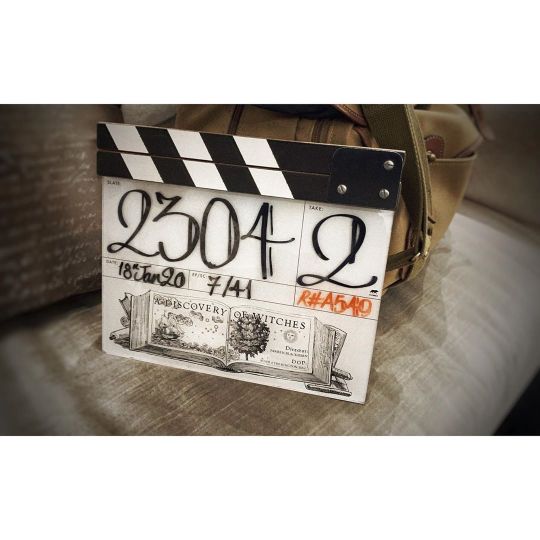

And that's a wrap!
Source Farren Blackburn on Twitter, Jenny Watson and Adam Etherington on Instagram
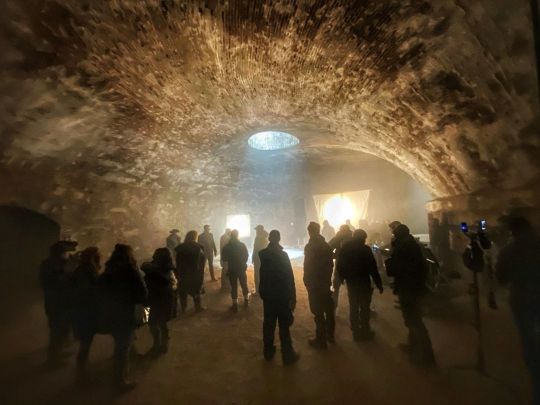

Today they were at La Rondella de bocare in Verona
Source Eduardo Ferreti and Adam Etherington on Instagram
#adows2#adow season 2#adowtv#adow#adiscoveryofwitches#adiscoveryofwitchestv#discovery of witches#a discovery of witches#diana bishop#teresapalmer#teresa palmer#matthew clairmont#matthew goode
70 notes
·
View notes
Photo



Second musical of the month, Les Misérables! It was amazing, and the cast were very sweet about autographs. I definitely enjoyed it, and I need to go again!
Jean Valjean (Adam Bayjou) The regular Jean Valjean for West End at the moment is Killian Donnelly (who you may know played Combeferre in the film), however we had one of the understudies for this performance. He was absolutely incredible, and he hit both the low and high notes with so little effort that it was clear he has an amazing range. Honestly, I would love to see him in the role again if I go back.
Javert (Hayden Tee) Hayden has the perfect voice for Javert, very deep and slightly ragged. His acting was also very good, especially in the scene just after the barricade, he was practically tearing his hair out!
The Bishop of Digne (Andy Conaghan) Andy has a really deep and rich voice, it suits the Bishop really well. It’s a shame we don’t have that many scenes with him.
Fantine (Carley Stenson) She has a richer voice than other Fantines I have heard, but she hits the notes well so it really works to her advantage and makes her sound more mature than Cosette or Eponine. She really sells her emotions, especially in Come to Me and when she is saved from arrest by Valjean.
Young Cosette (Grace Salsoni/ Talia Etherington/ Holly McDonagh) While I have to admit that I’m not entirely sure which of the three I saw, she had a very lovely voice and it was incredibly strong. Some Cosettes can be quite quiet (understandably) but that was not a problem here.
The Thénardiers (Steven Meo and Jacqueline Tate) These two were absolutely brilliant! They were hilariously funny, and their antics were a bit of relief from the depressing scenes. Thénardier’s little responses to things (Such as saying ‘fair enough’ when Javert refuses to release him and his gang) really add to the humour and the two actors have great charisma together. Also I met Madame Thénardier and she was so lovely about giving autographs and even chatted with us for a bit!
Gavroche (Felix Warren/ Ben Perkins/ Charlie Strip) Once again, I’m not sure which Gavroche I saw (though my mum later pointed out that it was likely 2 of them), but this kid had me in tears. I don’t cry easily at media, but his death tore me up. Really great, probably the best Gavroche I’ve heard. Also, when the curtain call was in progress they split the actors into groups, so Enjolras was with him, and when they separated they grinned and saluted each other and??? My heart??? It was adorable.
Eponine (Karis Jack) I actually want to die. This was one of the best Eponine’s I’ve ever heard, and she looks almost exactly like I imagine her to look. Honestly if I were Marius it would be a no brainer on who to pick. Once again, A Little Fall of Rain made me cry, and she harmonised with Marius really well. She also came with Fantine to get Valjean, and they all stood looking over Marius and Cosette for a while before anyone joins them.
Cosette (Charlotte Kennedy) Now, here’s where I have to be mean. First, I just want to say that the actress was so sweet and this is nothing against her character, but she was just outmatched. Her voice was really shrill and shaky, but not in the way that sopranos normally are, it seemed like she’d strained her vocal chords or something? If that is the case then of course nothing against her and I hope she feels better soon, but if not… Well, she was still a brilliant actress, just not the best singer.
Enjolras and Grantaire (Hyoie O'Grady and Hugo Chiarella) I was originally intending to group all the boys together, but honestly Enjolras needed his own segment and I knew if I wrote about him on his own I’d end up talking about Grantaire a lot because they had really sweet moments together. My solution? Group them. OK, so starting with the actors themselves, Enjolras was really well cast, enigmatic and the actor himself was so sweet and chatted for a while. He really made me want to join a revolution. We don’t hear as much of Grantaire, but he had a very smooth voice and was really funny (in Red and Black when teasing Marius he sits on his lap and kisses his cheek(?)). He was also very good at being serious though, such as when he comforts Marius about Eponine’s death. The two together were gold. They worked really well together, and had both funny and heartwarming moments. Funny moment: Enjolras is giving all the barricade boys a brohug™ but leaves R out, so he just stands there and does the ‘what the hell’ gesture. Heartwarming/sad: Enjolras finally gives Grantaire that hug during Drink with Me. As in, the actors stand there hugging each other for pretty much the remainder of the song. Also, Grantaire dies when he jumps over the barricade after Enjolras (who is killed by an explosion). I’ve spent too much time talking about these two, but I couldn’t not.
Marius (Paul Wilkins) This Marius was brilliant. He had a really rich voice, and he paired really well with the other barricade boys. He also hits Thénardier, which is definitely a bonus. He’s very good at projecting emotion with his voice; he sounds like he’s genuinely crying in both A Little Fall Of Rain and Empty Chairs at Empty Tables.
The Barricade Boys (sans Marius, Enjolras and Grantaire) First, two pieces of explanation. One, I haven’t written out all the names, because there’s a point where even I lose patience. I instead included a photo of the cast. Two, I really wanted to do a separate listing for each of the boys, but I didn’t have enough information on each of them to be detailed. Anyway, they all harmonised very well, and there was a real range of voices, with Shaq Taylor as Jehan most noticeably bringing up the rear with a very low voice. They all bounced very well off of each other, and had a lot of fun or sober moments.
Finally, a call-out post to specifically Clare Findlater, but more broadly to creatives, ensemble members and anyone who isn’t visibly up on stage playing a main role: Please, when people ask you for autographs, don’t say, ‘oh I’m only an ensemble member’ or 'technician’ or in this cast 'orchestra member’, because you know what? You guys are just as important as the Jean Valjeans and the Enjolras’, if not more so. Without you the show wouldn’t run at all. So you aren’t 'just’ something, you’re the (vastly unappreciated) backbone of the show. Well done you guys!
45 notes
·
View notes
Text
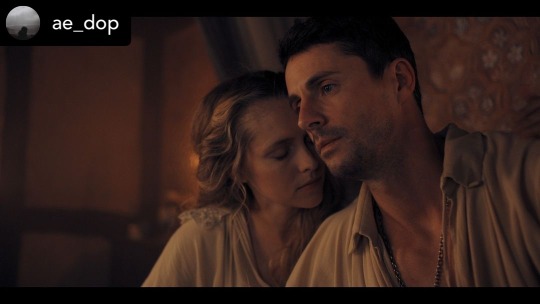
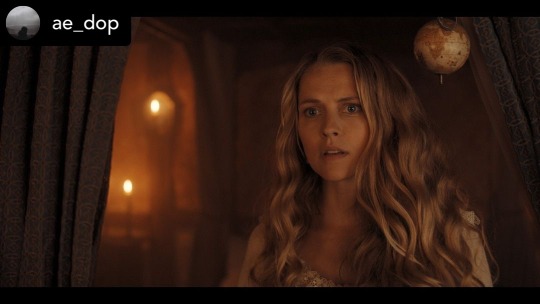



ae_dop A few little rushes frames from #ADOW2…
#Arri #AlexaMini with #Panavision #PVintage primes
ADOW #ADiscoveryofWitches #MatthewGoode #TeresaPalmer #adiscoveryofwitches2 #films #cinema #film #movies #filmmaker #filmproduction #director #movie #filmlife #setlife #producer #cinematic #actor #production #filmmakers #cinematography #indiefilm #filmmaking #lenses #bts
______
*DOP Adam Etherington BSC posted these new photos on June 30, 2022.
#matthew goode#a discovery of witches#matthew clairmont#matthewgoode#adow#matthew roydon#teresa palmer#diana bishop#adowtv#all souls trilogy#shadow of night#adows2#cinematography#adam etherington
18 notes
·
View notes
Text
Adam Hughes joins growing Portsmouth Comic Con 2020 guest list
Adam Hughes joins growing Portsmouth Comic Con 2020 guest list
Portsmouth Comic Con – International Festival of Comics has announced multiple Eisner, Harvey and Inkpot award-winning and New York Times best-selling author, Adam Hughes, to its increasingly impressive Artists Alley line-up for 2020 sponsored by Catawiki.
The largest event of its kind in the South of England is set to return to Portsmouth Guildhall on Saturday 2nd and Sunday 3rd May with…
View On WordPress
#Adam Hughes#Janet K Lee#June Brigman#Katie Schenkel#Marguerite Sauvage#Portsmouth Comic Con – International Festival of Comics#Roy Richardson#The Etherington Brothers
0 notes
Text
Tom via _harrietslater instagram story | 21/05/2019
12 notes
·
View notes
Video
youtube
NEW MUSIC:
Artist: Phoebe Bridgers
Track: I Know the End (july 2020).
Video Credits:
Director: Alissa Torvinen.
Executive Producer/Producer: Dilly Gent.
Production company: Son&Heir.
Producer: Barret Hacia.
Production Manager: Sean Blau.
Director of Photography: Casey Stolberg.
Steadicam: Chris Loh.
Gaffer: Quinn Brudos-Sommers.
Key Grip: Hiram Borges.
1st AD: Peter Etherington.
Production Designer: Britt Keller.
HMU: Jenna Nelson.
Costumer: Dagmarette Yen.
2nd AD: Sherry Shi.
Editor: Niles Howard.
Color: Bryan Smaller / Company 3.
VFX: Ryan Game.
1st AC: Connor Lambert.
2nd AC: Will Hecht.
Set Lighting Tech: Andrew Kendall.
Live Lighting Design: Nick “Spike” Inglis.
Best Boy Electric: Ben Perez.
Best Boy Grip: Michael Rosner-Hyman.
Grip Ashley: Petrie.
Production Designer: Britt Keller.
Art Assistant: Chelsea Alexander.
Studio Teacher: Chelsea Northrop.
Truck PA: Akeem Glenn.
PA: Matt Keibler.
PA: Mark Kaercher.
PA: Drake Escrofani.
PA: Alex Rodriguez.
Band: Phoebe Bridgers.
Band: Marshall Vore.
Band: Harry Whitford.
Band: Odessa Jorgensen.
Band: Nick White.
Band: Jackson Bridgers.
Band: Christian Lee Hutson.
Woman: Lily Hayes.
Apple Kid: Clementine Huston.
BG: Adam Sputh.
BG: Zoe Donahoe.
BG: Emily Bannon.
BG: Devin Fance.
BG: John Hein.
BG: Jeremy Mao.
BG: Garcia Segura.
BG: Grace Garner.
BG: Lulu Clark.
BG: Ruby Henley.
Filmed at LA Memorial Coliseum.
0 notes
Text
Auto-ethnography - Key Quotes
Ellis, Carolyn, et al. “Autoethnography: An Overview.” Forum Qualitative Sozialforschung / Forum: Qualitative Social Research, Jan. 2011, www.qualitative-research.net/index.php/fqs/article/view/1589.
Meaningful, accessible, and evocative research grounded in personal experience, research that would sensitize readers to issues of identity politics, to experiences shrouded in silence, and to forms of representation that deepen our capacity to empathize with people who are different from us
Consequently, autoethnography is one of the approaches that acknowledges and accommodates subjectivity, emotionality, and the researcher's influence on research, rather than hiding from these matters or assuming they don't exist.
Autoethnography, on the other hand, expands and opens up a wider lens on the world, eschewing rigid definitions of what constitutes meaningful and useful research; this approach also helps us understand how the kinds of people we claim, or are perceived, to be influence interpretations of what we study, how we study it, and what we say about our topic.
Autoethnographers must not only use their methodological tools and research literature to analyze experience, but also must consider ways others may experience similar epiphanies; they must use personal experience to illustrate facets of cultural experience, and, in so doing, make characteristics of a culture familiar for insiders and outsiders. To accomplish this might require comparing and contrasting personal experience against existing research (RONAI, 1995, 1996), interviewing cultural members (FOSTER, 2006; MARVASTI, 2006; TILLMANN?HEALY, 2001), and/or examining relevant cultural artifacts (BOYLORN, 2008; DENZIN, 2006).
An autobiography should be aesthetic and evocative, engage readers,and use conventions of storytelling such as character, scene, and plot development (ELLIS & ELLINGSON, 2000), and/or chronological or fragmented story progression (DIDION, 2005; FRANK, 1995).
The purpose of this description is to help facilitate understanding of a culture for insiders and outsiders, and is created by (inductively) discerning patterns of cultural experience—repeated feelings, stories, and happenings—as evidenced by field notes, interviews, and/or artifacts (JORGENSON, 2002).
Interactive interviews usually consist of multiple interview sessions, and, unlike traditional one?on?one interviews with strangers, are situated within the context of emerging and well?established relationships among participants and interviewers (ADAMS, 2008).
Co-constructed narratives illustrate the meanings of relational experiences, particularly how people collaboratively cope with the ambiguities, uncertainties, and contradictions of being friends, family, and/or intimate partners.
Consequently, writing personal stories can be therapeutic for authors as we write to make sense of ourselves and our experiences (KIESINGER, 2002; POULOS, 2008), purge our burdens (ATKINSON, 2007), and question canonical stories—conventional, authoritative, and "projective" storylines.
In so doing, we seek to improve and better understand our relationships (ADAMS,2006; Wyatt, 2008), reduce prejudice (ELLIS, 2002a, 2009), encourage personal responsibility and agency (PELIAS, 2000, 2007), raise consciousness and promote cultural change (ELLIS, 2002b; GOODALL, 2006), and give people a voice that, before writing, they may not have felt they had (BOYLORN, 2006; JAGO, 2002).
Writing personal stories can also be therapeutic for participants and readers.
Isolated to home-work for most of the day, these women did not have the opportunity to share stories of discontent; thus, they felt alone in their struggle, as if their isolation and feelings were issues with which they had to contend personally. FRIEDAN thus turned to writing in order to introduce and share women's stories. Her writing not only came to function as therapeutic for many women, but also motivated significant cultural change in our understanding of and public policies toward women's rights.
the ability for participants and readers to observe and, consequently, better testify on behalf of an event, problem, or experience (e.g., GREENSPAN, 1998;
ROGERS, 2004); writing allows a researcher, an author, to identify other problems that are cloaked in secrecy—e.g., government conspiracy (GOODALL, 2006), isolation a person may feel after being diagnosed with an illness (FRANK, 1995), and harmful gender norms.
As witnesses, autoethnographers not only work with others to validate the meaning of their pain, but also allow participants and readers to feel validated and/or better able to cope with or want to change their circumstances.
In using personal experience, autoethnographers not only implicate themselves with their work, but also close, intimate others (ADAMS, 2006; ETHERINGTON, 2007; TRAHAR, 2009).
Participants often begin as or become friends through the research process. We do not normally regard them as impersonal "subjects" only to be mined for data. Consequently, ethical issues affiliated with friendship become an important part of the research process and product.
An autoethnography can also be judged in terms of whether it helps readers communicate with others different from themselves or offer a way to improve the lives of participants and readers or the author's own.
0 notes
Photo

Madison Etherington, “Tagged”, 8in x 8in
I wanted this image to speak to the idea that technology is so consuming our society today that not only will it follow us after death, but in some cases it contributes to the cause of death. I used a similar visual to the traditional toe tags that were used to identify bodies.
The feet were created by Adam Zubin, titled foot.
0 notes